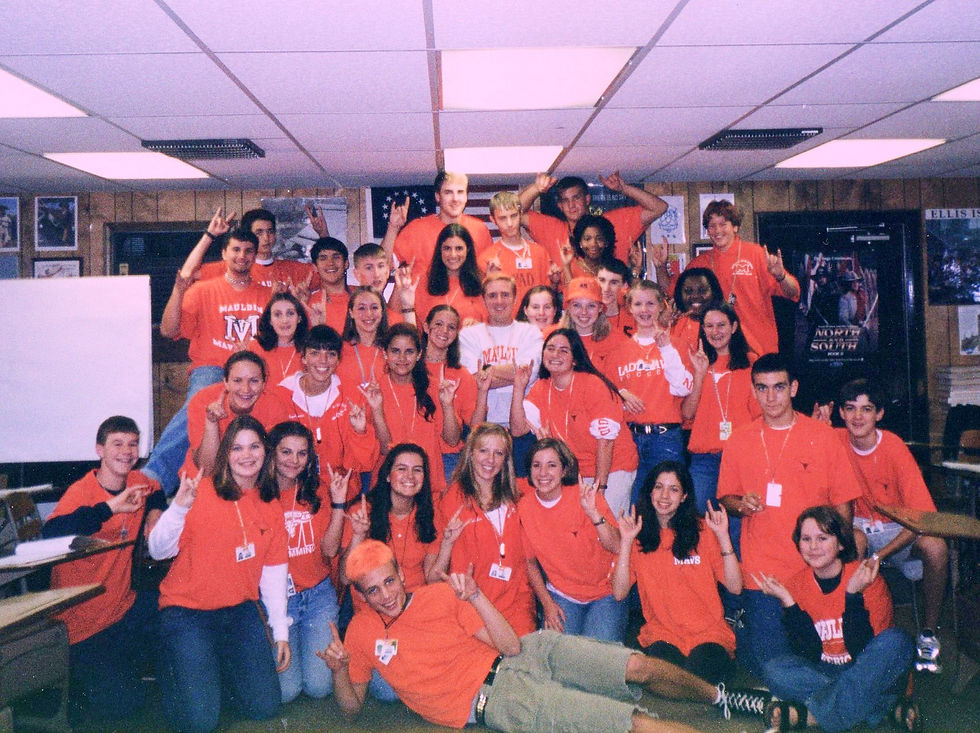Back to School: Rekindling Wonder, Imagination, and the Heart of Learning
- Thomas Riddle

- Aug 13
- 3 min read

As the new school year begins, educators in every role—teachers, administrators, counselors, and support staff—stand at the edge of a remarkable opportunity. Hallways hum with fresh energy, classrooms await stories yet to be told, and students arrive with a mix of excitement and uncertainty.
This is our moment to design not just lessons, but experiences—moments that spark curiosity and inspire growth. And that starts by remembering what it felt like to be a student: the thrill, the nerves, and the boundless imagination that shaped our early learning.
Rediscovering the Student Within
Think back to your own school days. Perhaps you remember a teacher who made you feel seen, a classroom that felt like a portal to another world, or the moment an idea finally clicked. Maybe it was the scent of a fresh box of crayons, a story that swept you away, or a project that unlocked your creativity.
Those memories also include moments of uncertainty—the fear of getting it wrong, the longing to belong. Our students carry the same mix of emotions into our classrooms today.
Teaching isn’t just about transferring knowledge; it’s about crafting environments where students feel safe to explore, take risks, stumble, and try again. When we reconnect with our own “inner student,” we’re better equipped to create spaces that nurture excitement and wonder.
Designing Immersive Spaces
An engaging classroom doesn’t have to be elaborate or expensive—it has to be intentional.
Teachers: Create cozy reading corners, hands-on math stations, or whiteboard walls that invite big ideas.
Virtual educators: Use visuals, interactive tools, and storytelling to make digital spaces vibrant.
Administrators: Champion flexible layouts, sensory-friendly areas, or outdoor learning zones that invite exploration.
Support staff: Small moments matter—warm greetings, encouragement in the lunch line, or a listening ear can transform a student’s day.
Whether in person or online, immersive spaces invite students to step into the learning, not just observe it.
Balancing Content and Creativity
Course content provides the foundation for learning, but creativity gives it life. Standards and assessments matter, yet they should never come at the expense of joy.
When students see how their passions connect to what they’re learning, engagement soars. That might mean:
Turning math into storytelling through real-world problems.
Letting science drive student-designed experiments.
Bringing history alive through art, debate, or performance.
Encouraging passion projects like podcasts, documentaries, or community solutions.
Creativity isn’t an “extra”—it’s a bridge that makes learning relevant and memorable.
And it’s not just for students. Educators need to nurture their own creativity to model what it looks like in action. Try a new teaching method. Collaborate on an ambitious project. Sketch, write, or build something purely for joy. Students notice when their teachers are energized by learning, and that energy is contagious.
A Call to Wonder
This year, let’s be the educators who remember:
Remember the student you once were, with all their hopes and fears.
Remember the magic of a classroom that felt fully alive.
Remember that connection fuels curiosity.
Let’s design learning spaces where desks launch dreams instead of limiting them. Let’s teach content with rigor while keeping imagination at the center. And let’s commit to keeping our own sense of wonder alive—because when we do, we give students permission to do the same.
Here’s to a school year filled with learning, dreaming, and creating—together.
For more ideas on creating engaging, wonder-filled classrooms, visit imagineeringedu.com to explore additional resources, such as our online course and the upcoming book Imagineering Education: A Guide to Creating the Most Magical Schools on Earth.




Comments